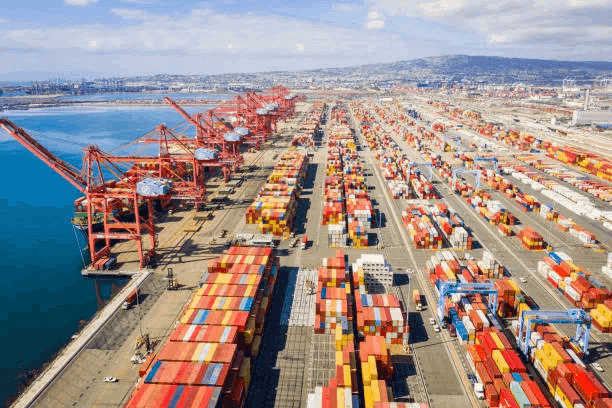
For maritime transportation companies, ensuring the seamless flow of goods while safeguarding employees, infrastructure, and cargo is paramount. While maritime security often conjures images of ships and ports, facilities that serve as operational backbones—including warehouses, container yards, and administrative offices—are equally critical to protecting overall operations.
Without robust facility security strategies, risks such as cargo theft, unauthorized access, and cyber threats can compromise the integrity of supply chains and result in significant financial losses. The 2023 Global Cargo Theft Report found that warehouses and storage facilities were the most common targets, accounting for nearly 40% of recorded thefts globally. These risks necessitate comprehensive security protocols.
In this post, we delve into the essential elements of securing maritime facilities and how proactive measures can mitigate risks.
1. Access Control and Perimeter Security
Facility perimeters are the first line of defense, and robust systems are required to deter, detect, and delay unauthorized access. Best practices include:
- Advanced Access Control Systems: Upgrade to systems utilizing biometric authentication (e.g., fingerprint or facial recognition scanners), RFID technology, or access tokens that expire after pre-designated timeframes.
- Layered Security Measures: Adopt a layered approach by integrating physical barriers like high-security fencing and reinforced gates with technology-driven systems such as infrared trip wires and motion-sensing cameras.
- Perimeter Intrusion Detection Systems (PIDS): Leverage PIDS, which utilize seismic sensors or radar, to immediately alert operators of potential breaches.
- 24/7 Monitoring: Continuous monitoring through an integrated security operations center (SOC) provides real-time situational awareness for rapid incident response.
Pro Tip: Ensure security systems integrate seamlessly with facility management software for better oversight and operational efficiency.
2. Cargo Theft Prevention
Cargo theft results in billions of dollars of losses annually and affects not just profitability but also trust with stakeholders. Maritime facilities, due to the volume of goods processed, require specialized strategies:
- Smart Locks and Seals: Utilize GPS-enabled or IoT-connected locks and seals to ensure container integrity from entry to exit. Companies such as Cakeboxx offer innovative container solutions that help improve both security and safety as compared to standard shipping containers.
- Geofencing Technology: Pair fleet tracking systems with geofencing to immediately alert management if containers or vehicles deviate from predefined routes.
- Cross-Dock Security Practices: Monitor high-traffic zones such as loading docks where goods are transferred. Employ enhanced surveillance in these areas to deter and detect tampering.
- Collaborative Networks: Join regional cargo theft task forces or intelligence-sharing groups to stay informed of evolving threats and techniques used by thieves.
Case Insight: A major East Coast logistics facility saw a 45% reduction in theft incidents after implementing RFID-tagged tracking coupled with automated alerts for unplanned cargo movement.
3. Cyber-Physical Security Integration
The rise of automation and IoT-enabled devices has blurred the lines between physical and cyber vulnerabilities. Maritime facilities face unique challenges:
- End-to-End Encryption for IoT Devices: Secure smart systems like inventory trackers and surveillance cameras with robust encryption protocols.
- Integrated Threat Response Systems: Utilize platforms that merge cybersecurity monitoring (e.g., firewalls and SIEM systems) with physical surveillance tools to identify overlapping threats.
- Red Team Exercises: Conduct penetration testing to identify vulnerabilities in converged security systems, covering both cyber and physical entry points.
According to the Center for Internet Security, a significant percentage of breaches occur due to exploited vulnerabilities in legacy systems. Upgrading to modern, scalable technologies ensures facilities stay ahead of sophisticated attackers.
4. Employee and Visitor Safety
The human element is often the weakest link in any security program. Effective training and comprehensive protocols ensure staff, contractors, and visitors contribute positively to overall security efforts:
- Behavioral Awareness Training: Train personnel to identify and report suspicious behavior and unusual activity around facilities.
- Workplace Violence Mitigation: Equip teams with de-escalation techniques and ensure supervisors are trained in responding to potentially volatile situations.
- Safety Equipment Accessibility: Maintain readily available safety gear such as personal flotation devices (PFDs) and ensure first-aid kits meet OSHA standards for maritime operations.
- Risk Insights: Utilizing risk analysis tools to conduct advanced employee screenings with technology such as Clearspeed.
5. Specialized Guard Services
Security personnel trained in maritime operations offer an unmatched level of protection, particularly in high-risk facilities. At Six Maritime, we provide:
- Counter-Surveillance: Guards skilled in detecting surveillance activities and suspicious behavior ensure proactive responses to potential threats.
- Cross-Functional Training: Personnel adept at handling physical breaches, fire emergencies, and workplace conflicts bring versatility to site protection.
- Technological Adaptability: Training in advanced systems, such as drone surveillance and thermal imaging, ensures readiness for evolving challenges.
Did You Know? Maritime-specific training for guards improves incident response times by as much as 30%, according to recent industry studies.
6. Regulatory Compliance
Compliance with international and national security frameworks is not just a requirement but a competitive advantage. Six Maritime helps clients navigate:
- ISPS Code Protocols: Ensure port and facility operations adhere to ISPS requirements through comprehensive audits and documentation.
- Industry Standards: Incorporate best practices outlined in frameworks like CTPAT (Customs Trade Partnership Against Terrorism).
- Local Collaboration: Build robust relationships with local law enforcement and coast guard units for mutual response readiness.
Fortifying the Foundations of Maritime Operations
Facility security is a cornerstone of maritime operations, where vulnerabilities can ripple across entire supply chains. By integrating state-of-the-art technologies, strategic personnel training, and layered defense measures, maritime facilities can reduce risks, enhance efficiency, and build trust across their ecosystems.
At Six Maritime, we specialize in tailored solutions that protect your people, property, and cargo with the precision that maritime operations demand.
Partner with us today to safeguard your facility with cutting-edge strategies and solutions. Together, we’ll navigate toward a more secure future.
